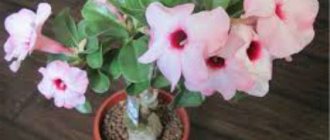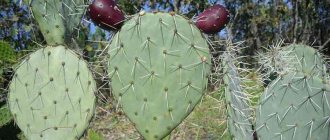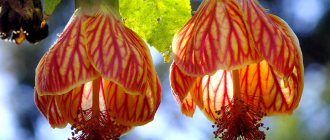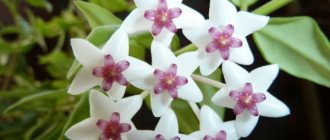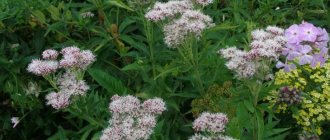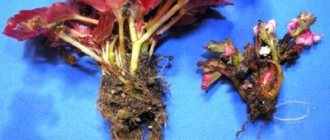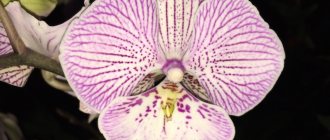Opuntia, commonly known as prickly pear, is a large genus of the Cactaceae family. It is believed that this is one of the most common cacti in nature, native to a vast territory from Patagonia to Canada.
Today, many species can be found in Australia, Southern Europe, and Africa. Under natural conditions, the crop will grow on rocky or sandy soils, rocky slopes and dry fields.
Prickly pear is a popular house cactus. Ease of care, decorativeness and the ability to obtain edible fruits are the main advantages of this unpretentious plant.
Botanical description and geography of habitat
Prickly pear, scientific name Opuntia microdasys, belongs to the cactus family . The succulent is also called small-needle prickly pear due to the characteristics of the covering of the lobes - segments. The genus is numerous, there are more than 150 species.
Important! This variety grows well in apartment conditions.
The birthplace of the plant is considered to be Mexico, America, and the Galapagos Island. The species is widespread in southern Russia. The succulent grows naturally in tropical forests, deserts, and valleys. The plant was discovered in the 19th century by I. Lehman. This variety is a medium-sized cactus. It grows like a bush. The stem is highly branched and grows up to 50 cm in height. On the stems in the axils there are abundant buds - areoles. The whitish areoles have small glochidia and are golden-yellow in color.
The processes are round and oblong segments. The size of the shoots is average - up to 5 - 7 cm in length, dark green in color. The flowers are yellow with a golden tint. The stamens are small, filamentous. Flowering occurs in summer. The fruits have the shape of a red berry (find out more information about cactus fruits in this material).
We talked about the differences between prickly pear and agave here.
Mr. Summer Resident informs: beneficial properties of prickly pear
The beneficial properties of the plant and its use for health are extensive. The valuable qualities of fruits and stems have been well studied using the example of prickly pear fig:
- The fruits are tasty and healthy both fresh and processed (drying, cooking). They are high in vitamin C and have been used as a remedy for scurvy.
- The fleshy stems are also suitable for food. In Mexico, they are considered as a vegetable with a high content of dietary fiber, vitamins, and minerals.
- Litramine stem extract has the ability to slow down the absorption of fats and reduce appetite. Used to treat people suffering from obesity, to lose weight and normalize metabolism.
- Thanks to the well-balanced content of bioactive substances, prickly pear fruits reduce cholesterol levels, improve the functioning of the heart and blood vessels, normalize hormone levels, blood sugar and the functioning of the nervous system, treat stomach ulcers, and act as a preventive measure for cancer and premature aging.
- Eating fruits will help preserve the beauty of your skin and hair. Prickly pear oil is used as cosmetics. According to reviews, the natural oil has a very pleasant nutty-herbal aroma, is perfectly absorbed, and is extremely effective against wrinkles.
The flower does not contain anything poisonous, contraindications are minimal. You should not eat too many fruits, as this can lead to constipation. But the most serious danger is posed by swallowed glochidia - they cause damage to the gastrointestinal mucosa and can only be removed surgically. The fruits are cleaned with thick gloves and a metal brush.
Obviously, appearances are deceiving. The harsh, unpretentious appearance of the usual indoor cactus hides its rich content. If you add to this a huge number of varieties, from miniature creeping to giant ones, spectacular flowering and unpretentiousness, it becomes clear why prickly pears so often become the subject of collecting or cultivating in rooms.
Photo
You will see a photo of the plant:
Conditions and care for home cultivation
Lighting
During the period of active growth, this cactus variety loves bright light, but direct exposure to the sun should be avoided. In the summer heat, light shading of the windows is required. In winter, the flower also consumes a lot of light. Additional lighting is required for 2 - 3 hours a day.
Watering
Water the plant sparingly, like all succulents. As the stem grows, the doses increase. In spring and summer, watering should be done once a week. In autumn, watering is reduced to once every 10–14 days. In winter, watering stops. The variety does not require additional spraying.
Attention! A warm shower is used to clean the leaves from dust. After the procedure, the plant is moved to a shady place until completely dry.
It is recommended to use only purified water for irrigation , acidified with several granules of citric acid. It is recommended to add water to the tray when watering so as not to compact the substrate.
Temperature
The temperature in summer is up to 20 – 27°C. In spring, the flower feels good at room temperature. The optimal air temperature in winter is 6 – 10°C.
Priming
The substrate should be moderately nutritious, loose, acidified, and light. You can purchase a ready-made mixture for cacti. At home, you can prepare the substrate yourself.
Soil composition:
- Turf soil – 1 hour.
- Leaf soil - 2 hours.
- Clay -1 tsp.
- Sand-1 tsp.
- Peat – 1 hour.
- Charcoal – 1 tsp.
- Humus – 1 hour.
Pot
For good growth, prickly pear should be planted in spacious, wide containers. Drainage holes are required at the bottom.
Important! To ensure stability of the pot, a drainage layer of 5–6 cm should be placed at the bottom.
It is better to use ceramic pots. Ceramics retain heat well and prevent roots from overcooling and overheating.
Trimming
When transplanting, pruning is required:
- Dry shoots are pruned.
- Deformed sections of the stem and diseased leaves are cut out.
- The root is cleaned of old, dry and rotten shoots.
- The sections are sprinkled with crushed charcoal.
- Strongly overgrown shoots that violate the shape of the crown should be pruned.
- Young trimmed fragments are used for cuttings.
Sloping, long branches should be tied up to form a beautiful bush.
Transfer
The plant is replanted after 2 - 3 years. Transplantation is carried out in the spring. The process is simple; you need to prepare the soil mixture in advance and disinfect the planting container.
Transplantation scheme:
- The plant is carefully dug out from the old pot.
- The roots are cleared of old soil.
- Sanitary pruning of the entire bush is carried out.
- The pot is treated with disinfectants and dried.
- The finished substrate is dried.
- Pieces of expanded clay and clay shards are placed at the bottom of the pot.
- The mixture is poured, the substrate is not compacted.
- The flower is buried at the root collar.
- The pots are installed in a place with diffused lighting.
During the week after planting, keep the seedlings dry.
Top dressing
The variety does not require regular fertilizing. In the spring and summer, complex mineral fertilizers are applied through watering once a month.
Find out more about caring for cacti in this material, learn about the types of cacti and their benefits and harms when growing in an apartment here.
Opuntia is native to all continents
Prickly pear, like many other cacti, comes from South America, more precisely, from Mexico. Now this plant has over 300 species, which vary significantly in size and shape. In this genus there are dwarfs no larger than a mouse, crawling along the ground, and giants - tall trees as tall as an elephant. The most popular among gardeners are the species with flat ear segments.
Prickly pear is a very popular plant. And in every country they call it differently. In its homeland - “Mexican cactus” or “tuna”. In Chile it is "nopal". In Asia - “dragon fruit”, also known as “pitaya” and “pitahaya”. The Germans call it “eared cactus”. In Russia it’s “mother-in-law’s language.” And also prickly pear is “Indian fig”, “Indian fig”, “barberry pear” or “fig cactus”, etc.
Prickly pear lives in a variety of climatic zones. It can be seen on mountain slopes, in deserts and semi-deserts, in tropical woodlands, on river banks and the sea coast. The cactus tolerates significant changes in day and night temperatures without problems. Interestingly, prickly pear grows not only in the southern regions; there are frost-resistant species that will not freeze in open ground even in central Russia.
Prickly pear has become its home on all continents
Prickly pears are curious with their variety of shapes and bizarre colors. This plant consists of articulated stems; they are flat, cylindrical or spherical. Prickly pear bushes grow up to 4 meters, and their diameter can reach two meters. There are tree-like forms, their height reaches six meters. Among the prickly pears there are also dwarf species, and there are ground cover creeping cacti.
This is interesting! Prickly pear adorned the coats of arms of Mexico and the city of Mexico. As legend has it, the city of Tenochtitlan, now Mexico City, was founded in the place where the sacred prickly pear cactus grew. The Aztecs saw an eagle on it, which was eating a snake. This picture was depicted on the state coat of arms. And the coat of arms of the capital is surrounded by a wreath of prickly pear stems.
An eagle with a snake sitting on a prickly pear has become a symbol of Mexico
These cacti have a powerful root system; it develops not in depth, but in width. Therefore, prickly pear will not be left without food and water even in the most meager conditions.
Important! Plants are covered with hard spines and small spines of glochidia collected in bunches. They are the most unpleasant. These spines have serrations. When touched, they pierce the skin, causing pain to the unwary cactus lover. The affected area itches. You can remove splinters with tweezers or carefully remove them in soap and water.
Prickly pear flowers are single and large, very bright, glossy in some species. They are yellow, red or orange. Quite large fruits, which are formed after the flower withers, are prickly, like the cactus itself. They are covered with tufts of glochidia, tiny spines with curved tips. The pulp of the fleshy fruit contains seeds, flat, with a hard skin.
Prickly pear fruits are quite edible
Prickly pears also attract gardeners with their unpredictable nature. Flower buds sometimes appear in the most unexpected places. The main advantage of prickly pear is that this flower requires minimal care and will delight even the most inexperienced gardener with its blooms. This plant is trained by nature to survive in the harshest conditions. And for prickly pear to bloom, it is enough to provide it with coolness during the dormant period and bright lighting all year round.
Note! Prickly pear fruits are rich in vitamin C. Syrup and jam are made from them. In Mexico, liqueur is made from cactus. It is used in pharmacology as biofuel and livestock feed. In some southern countries, prickly pear is grown as a thorny hedge. Red food coloring, carmine, is obtained from prickly pear.
Such different prickly pears: types of cacti
The prickly pear cactus has more than 300 species with varied stem shapes. Some plants of this genus are not at all similar to each other.
- Prickly pear is a dwarf species (no more than 30 cm in height). The stem segments are rounded and have few branches. Blooms in summer, flowers are large and yellow. The fruits are red.
- Opuntia subulata is a fast-growing cactus, reaching two meters in two years. Stems are cylindrical. The spines are long, located on small tubercles. The flowers are red, with a pink tint.
- Lindheimer's prickly pear is a branched bush that reaches a height of three and a half meters. Prickly pear segments are on average up to thirty centimeters, flat and oval. The spines are translucent, yellowish, and resemble bristles. The flowers are yellow and the fruits are purple with a white top.
- Opuntia cylindrical, its homeland is Peru and Ecuador. The plant has a cylindrical stem with straight branches pointing upward. Flowering in spring and summer. The flowers are bright scarlet. Opuntia cylindrical is popular in southern Europe.
- The Brazilian prickly pear is a tree up to twenty meters high. The main shoots make up a cylindrical trunk, branches up to one meter long. They have leaf-like segments at their ends. The spines grow 1.5 cm. The flowers are yellow.
- Darwin's prickly pear is a dwarf species with rather large flowers. This cactus grows up to 10 cm, and the diameter of the yellow-brown flowers reaches 4 cm.
- Opuntia fragilis is a mini-cactus, bright yellow flowers with an orange core, approximately three centimeters in diameter.
- Opuntia Imbricata is a bush about 25 cm high. It blooms with purple flowers, unusual for prickly pears.
- The red-red prickly pear is a bush just over a meter tall; it got its name because of the color of the glochidia; the green stems of the cactus are covered with bunches of rusty-red spines. The flowers are orange.
Features of planting in open ground
In southern and temperate climates, the plant can be planted in open ground.
Flower growers recommend placing the flower in a well-lit place, but closed from drafts. Drainage is required.
It should be planted on the tops of multi-tiered flower beds and hills so that water does not accumulate in the soil. The flower dies from excessive wetting.
Reproduction
Seeds
Sowing of seeds is carried out in mid-March. The seeds should first be wiped with sandpaper due to their dense shell. The seeds are soaked in a weak solution of manganese for 2 - 3 hours.
Substrate composition: sand, activated carbon, leaf soil, in a ratio of 2:1:2. Before sowing, the substrate is calcined in the oven.
Sowing pattern:
- Small wide containers are filled with a layer of drainage and prepared substrate.
- The seeds are evenly distributed over the soil surface.
- The seeds are buried 1-2 cm.
- The crops are moistened.
- The containers are covered with film.
- Daily ventilation of the greenhouse is required.
- The substrate is sprayed with water as it dries.
- The seedlings are kept in the greenhouse for 3 – 4 weeks.
- Sprouts with 2 - 3 leaves are planted in small pots for growing.
Young shoots are grown for 2 years. Next comes transplanting into permanent pots.
Cuttings
Cuttings are carried out mainly in the spring.
Important! For propagation, a healthy young stem without flowers is used.
The cuttings are first sprinkled with charcoal and dried in a vertical position for 5–8 days until a dense film forms at the cut points.
Procedure for growing seedlings:
- The substrate is slightly moistened.
- The cuttings are installed shallowly in the container.
- The seedlings are covered with film.
- The containers are installed in a bright place.
- The air temperature for rooting is at least 20 °C.
- Rooting occurs quickly, after 2-3 weeks.
- Young shoots are transplanted into separate containers.
More details about the propagation of cacti can be found here.
Choosing a container for planting
Most gardeners prefer to use shallow but wide containers when growing cacti. Their disadvantage is that the soil dries out quite quickly, although several specimens can be planted in such a pot at once.
In fact, any pot will do for prickly pear, as long as it has good holes in the bottom for drainage. You can also replace small holes with one, but larger one. To prevent water from leaking out of the flowerpot and damaging the window sill or furniture, a layer of pebbles should be placed at the bottom of the pot.
If you follow all the conditions for growing a cactus, then in a short time it will delight you with unusual flowers that will decorate any room.
Bloom
Prickly pear blooms in mid-summer. Flowering is numerous, up to 10 flowers are formed on one shoot. The flowers themselves are yellow with a lemon tint, the diameter of the flower reaches 4 - 5 cm. The duration of flowering depends on the conditions of detention, ranging from 1 to 3 weeks. It is difficult to achieve flowering at home; the plant requires greenhouse conditions.
To ripen the buds, the flower requires fresh air, a wide, voluminous pot, a sufficient amount of light, keeping the plant dry in winter, limited feeding, and a constant location of the pot without moving it. After flowering, flowers are removed only when the petals are completely dry.
Read more about cactus flowering here.
Briefly about diseases and pests
- Lack of light causes stunted growth and leaves become deformed.
- Increased air temperature during dormancy stops flowering and the stems become elongated.
- Due to dampness of the soil, drafts and cold, the substrate turns sour, the leaves dry out and fall off.
- Fungal infections are the most dangerous for this flower. The stem becomes brown, the entire bush becomes covered with mold. The reason is high humidity. The plant is discarded. Treatment of healthy flowers and substrate with a fungicide is required for prevention.
- An urgent plant transplant will help against root nematodes. The affected roots are cut off, the root is immersed in hot water for 5 - 10 minutes. The substrate and pot are sterilized.
- Timely treatment of the plant and soil with any insecticides will help prevent scale insects, aphids, spiderbugs, and other pests.
You can learn about diseases and pests of cacti in these materials.
Photo gallery
Most often this happens due to excessive watering and too damp indoor air. If dark soft areas appear on the cactus, they should be cut off and the flower treated with a fungicide. After this, it is necessary to resume proper care of the plant.
Prickly pear can be affected by organisms such as scale insects, mealybugs, and aphids. In order to get rid of these pests, you need to treat the cactus several times with insecticides.
Similar plants
- Prickly pear Sheri has the same round greenish segments as the fine-haired prickly pear. The flowers are pale yellow.
- White prickly pear blooms with large yellow flowers. The segments are densely strewn with setae and glochidia.
- Opuntia long-awned. The stem also consists of small green lobes covered with dense, short, thin needles.
- The Alba variety is a variety of small-haired prickly pear that grows as a compact bush. Short needles are densely planted over the entire surface of the plant.
- Sulfur-yellow prickly pear also has small lobes covered with thick light spines (read about how not to get pricked by a cactus and what to do if this happens). The plant is small, up to 40 cm in height.
Despite the fact that prickly pear is a desert flower, it requires careful and attentive treatment. Gentle light, moderate watering, careful feeding are necessary conditions for the growth and development of a flower.


